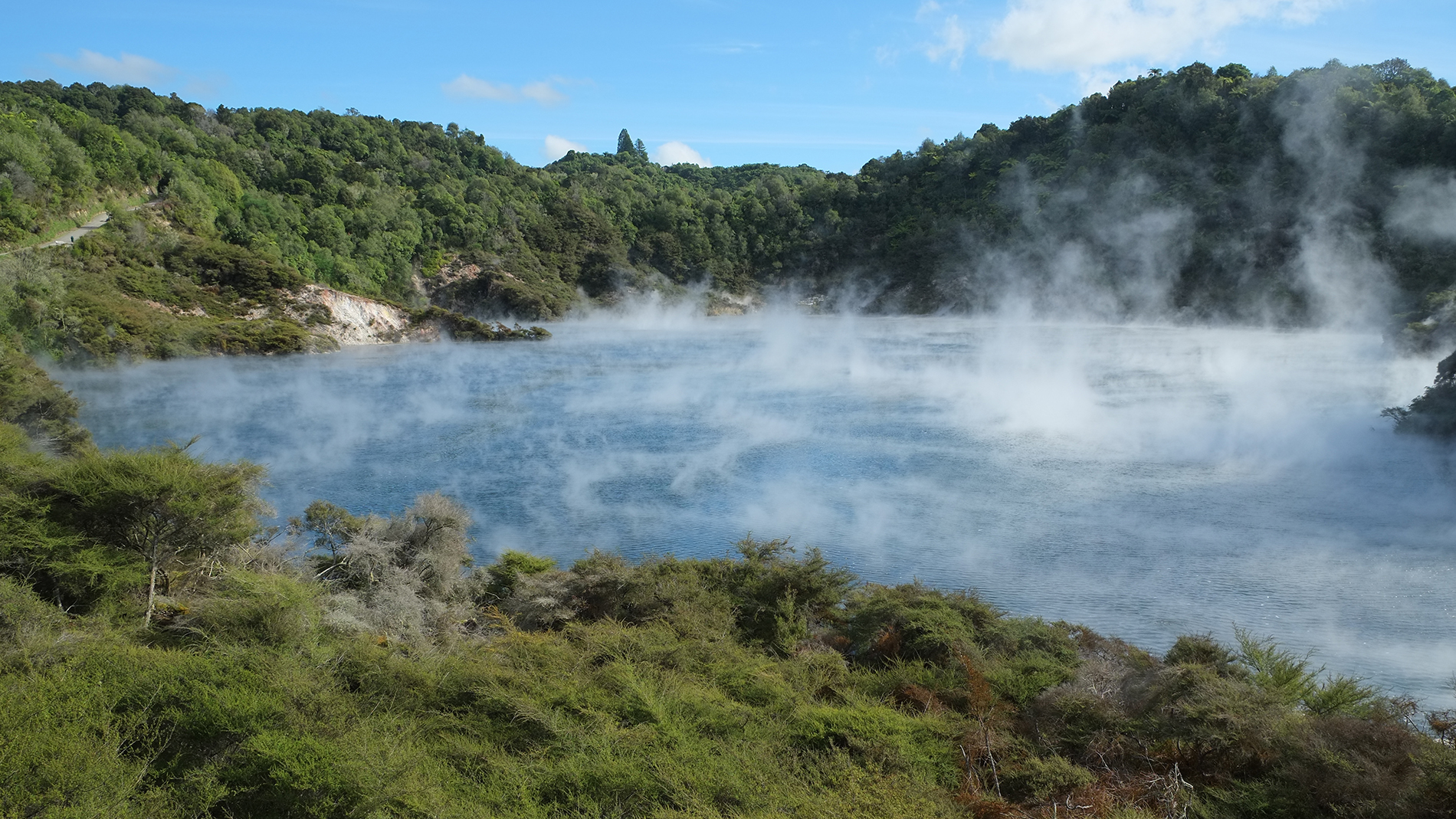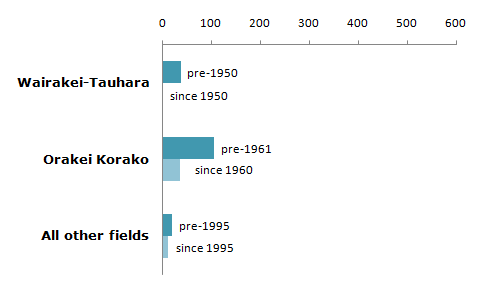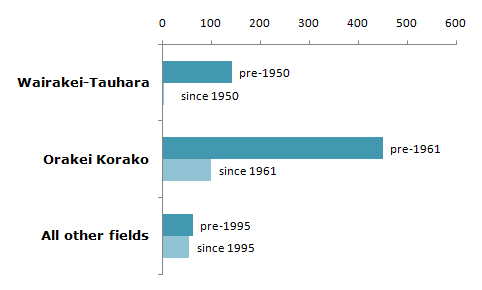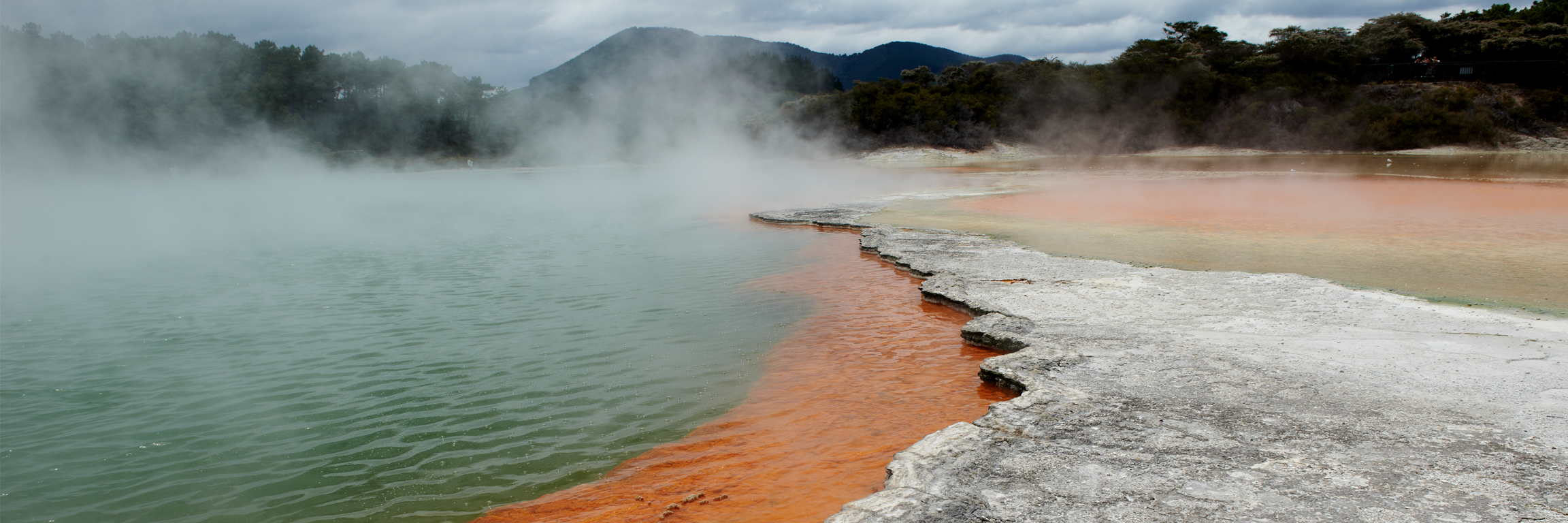Geothermal monitoring in the Waikato
Our region's geothermal areas are unique and internationally renowned. However, many have been damaged by changing land use and energy generation, and there is an increased pressure to develop the areas for more energy or as tourist attractions.
Waikato Regional Council regularly monitors and reports on our region's geothermal resources, the pressures they face, and how they are changing.
Our indicators summarise the results of our science and monitoring programmes, and provide a holistic report on the state of the Waikato region's environment.
Geysers and sinter springs

Why we monitor geysers and sinter springs
This indicator measures changes in the number and condition of geysers and sinter depositing springs at selected sites in the Waikato region.
Geysers and sinter springs are important indicators of the state of our geothermal systems. This is because activities near one geothermal feature or field (such as water extraction) can affect features in another field if they are part of the same geothermal system. Waikato Regional Council monitors the number, chemistry and location of geysers and sinter depositing springs in the main geothermal systems in the region to help us detect changes that may be occurring within these systems.
New Zealand is known worldwide for its outstanding geothermal attractions. Almost 80 percent of New Zealand’s geothermal systems are in the Waikato region. Geothermal systems are valued for their:
- energy resource
- tourism income
- unique ecosystems
- cultural values
- spiritual values
- amenity values
- historical values.
What's happening?
Our monitoring has shown that the number of sinter depositing springs and active geysers in the Waikato region has been relatively stable since 1961. The Resource Management Act 1991 empowered us to protect vulnerable and rare surface features through our Regional Policy Statement, Regional Plan and Resource Consent conditions.
This technical report explains Sinter-forming springs and geysers in the Waikato region.
Unfortunately, past human activities have destroyed large numbers of springs and geysers. Threats to our geothermal features include:
- geothermal power development
- land drainage
- road works
- tourism
- vegetation clearance
- rubbish dumping
- use of geothermal water for bathing and space heating.
How we monitor
Data and trends
Current data are based on monitoring records since 1995. Historical data are based on records collected from about 1900 to 1995.
The graphs show change in the number of sinter depositing springs and active geysers in the past 50 years. Over half of the region’s geysers and sinter depositing springs have ceased activity or have been destroyed. Most of these features were lost after the Wairakei power station was commissioned in 1958 and Lake Ohakuri was created in 1961 as part of the Waikato River Hydro Scheme.
Many of our remaining springs and geysers have been significantly modified by human activity. As a result, natural features such as sinter terraces are becoming increasingly rare in many geothermal fields.
Number of active geysers and sinter springs in Waikato geothermal fields


Download the data
This Excel file contains the source data to this indicator's graph and any additional data.
When this indicator is updated
This indicator is only updated if significant changes are detected, as lasting changes in geysers and sinter springs are unlikely under the current policy regime that protects significant geothermal features.


